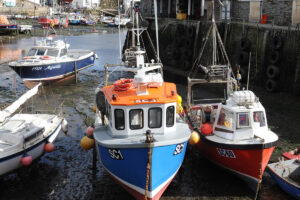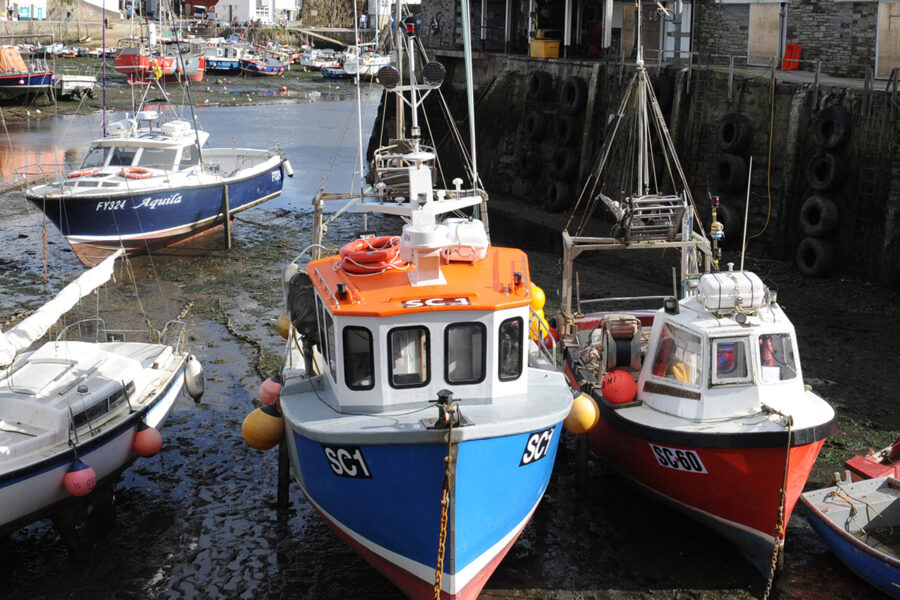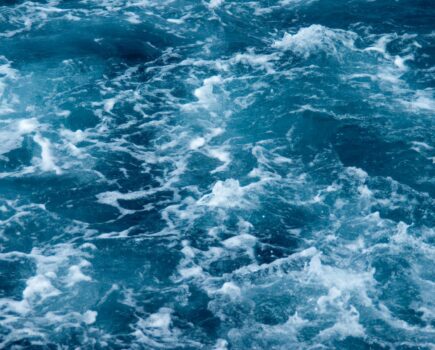In the third of his series of articles, NFFO risk, safety and training lead Charles Blyth offers advice on preparing for the out-of-water inspection, now that the new MCA under-15m safety code is in force
This week, we will take a look at the out-of-water inspection that is now required by the MCA. This is totally new for under-15m fleet, and due to the diverse nature of boats and their construction and propulsion set-up, owners are often confused as to what they need to present to the MCA during these inspections. The out-of-water inspection must now be undertaken every five years, and within one year of your first in-water inspection. Many owners will take their vessel out of the water annually anyway, so to reduce costs, try to tie in the MCA inspection for when this usually happens.

Fishermen working from tidal harbours are ahead of the game when it comes to hull maintenance; elsewhere, it makes sense to co-ordinate routine work on the hull with your MCA out-of-water inspection. (Photo: Phil Lockley)
Ideally, the hull should be pressure-washed to enable the surveyor clear access to assess the hull condition.
If your hull is steel, the MCA is likely to request ultrasonic thickness measurements of the hull, bulkhead and deck. This can be costly, but many insurers are now requiring this information too. Sea chests or other engine cooling systems should be checked for damage and cleaned as necessary.
The MCA is unlikely to accept ‘doubler’ plates on the hull as permanent repairs, so make sure insert pieces of steel are used if needed, and follow sound repair principles such as radius corners, 300mm length minimum, and for the work to be completed by a suitably qualified welder. The MCA is now likely to want to see evidence of this.
If your hull is wooden, go through the hull and ensure the caulking is intact, and that there are no soft areas of wood. In some cases, the MCA may request that keel bolts are removed to inspect the condition. This can sometimes cause more harm than good, so make sure you consult the surveyor you are dealing with to see if an alternative solution can be found.
If your hull is made of fibreglass, the surveyor is likely to ‘sound’ the hull with a hammer to check for any areas of delamination or excessive osmosis. Make sure any through-hull fittings are in good condition and appropriately secure.
The surveyor will inspect the propeller, and will want to see propellor shaft clearances, so depending on your set-up, it is a good idea to arrange an engineer to take measurements using a clock gauge or feel gauges. Better still, withdraw the shaft so the bearing surfaces are exposed.
It is a good idea to check this every five years anyway, so try to co-ordinate this with your MCA inspection. There are several benefits to doing this and identifying defects or wear, including reducing the likelihood of water ingress through the shaft seal, avoiding excessive vibration and increasing reliability – which means more days at sea.
If your vessel has sea valves, these should be removed, cleaned and serviced. If you do this ahead of your inspection, be sure to photograph and document what you do to save repeating the exercise.
Although these new inspections may come as a shock to many owners, they are designed to reduce the likelihood of breakdowns and accidents at sea. In most cases, it is a good idea to address the items the MCA wants to see on a five-year cycle anyhow.
If you are still concerned about how to present your vessel, contact your local marine office, which will put you in touch with a surveyor.
A new short film, funded by The Seafarers’ Charity, with more information on how to get ready for your inspection, can be viewed below…
This story was taken from the latest issue of Fishing News. For more up-to-date and in-depth reports on the UK and Irish commercial fishing sector, subscribe to Fishing News here or buy the latest single issue for just £3.30 here.








